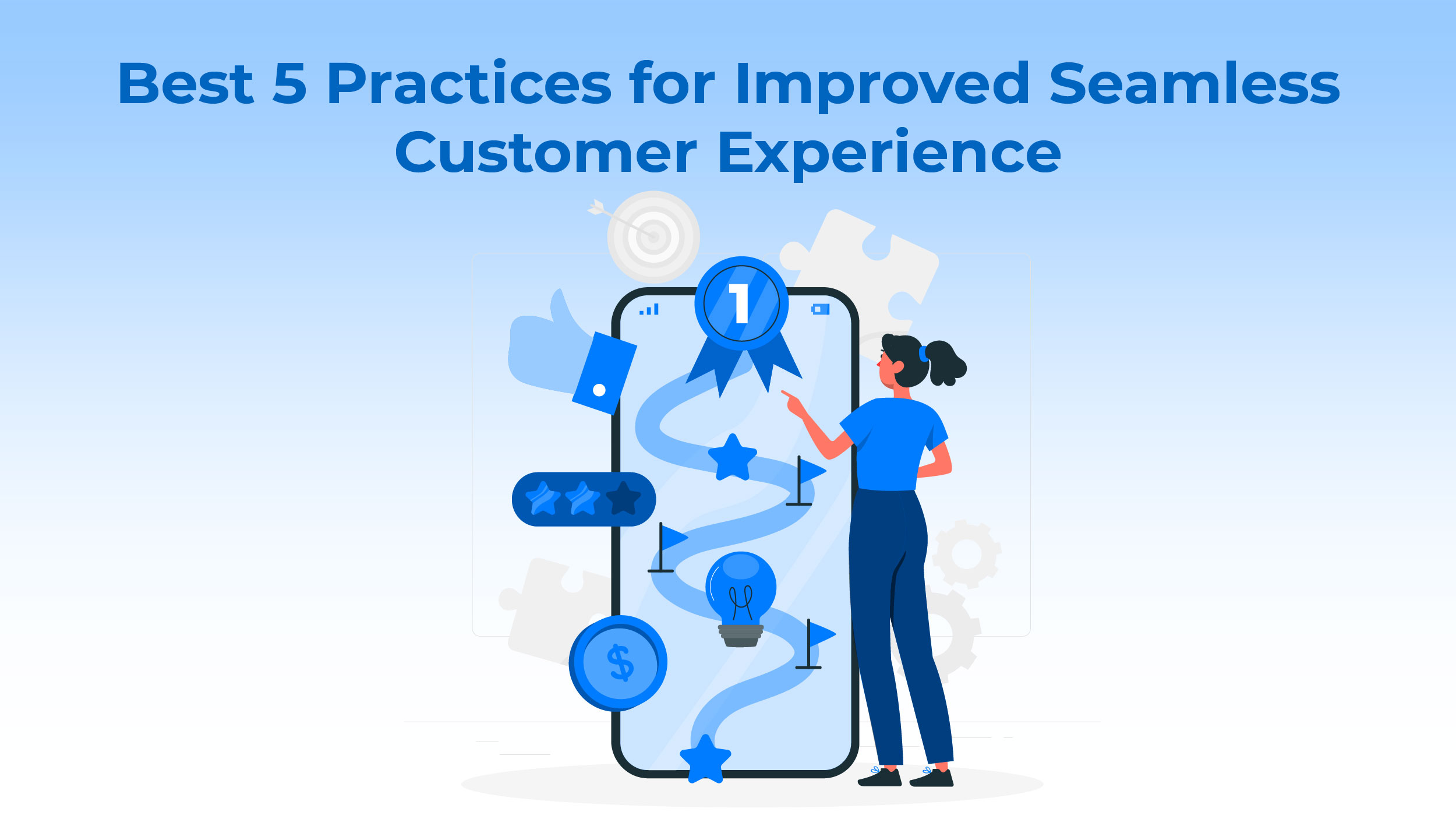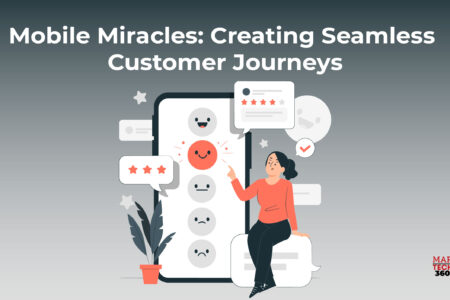In the modern era of technology, customers have high expectations for a seamless and unified experience when engaging with a brand across various channels. Whether it’s through a website, mobile apps, social media platforms, or in-person interactions at physical stores, they desire smooth and interconnected experiences at every touchpoint. In this blog, we will discuss the role of mobile apps in creating a seamless customer journey, as the saying goes, “Customer is King”. Let’s get started!
What is the Role of Mobile Apps in Creating a Seamless Customer Journey?
Mobile apps have a significant impact on customer experience (CX). They allow organizations to connect with users anytime and anywhere. Mobile apps can utilize location data to enhance the user experience and provide relevant offers. For example, they can guide people in physical stores to find competitive products and services.
However, mobile experiences can sometimes encounter issues. Functional bugs, like unresponsive buttons or incorrect search results, can disrupt user interactions. These problems can include difficulty selecting a specific product feature, or issues with password reset links or codes. Each year, a staggering $1.6 trillion is lost in the United States due to consumers switching brands following negative customer service experiences.
Effective customer journey analysis is essential to identify and address such issues. For instance, when customers place orders for in-store pickup, clear communication about when and where to collect the order is crucial. Customer journey mapping ensures that notifications, such as order confirmations, push messages, and SMS updates, keep customers informed about the order pickup process.
When businesses plan their mobile apps, they should consider their industry and the role the app plays in providing a seamless customer journey.
Also Read: Top 14 Content Syndication Tools to Maximize Your Reach and Engagement
Best 5 Practices for Improved Seamless Customer Experience

- Optimize for Mobile: Your company’s website must work seamlessly on mobile devices. A mobile-friendly site should have a clean layout, easy navigation, and text that’s easy to read. Customers prefer a simple and straightforward design that allows them to carry out the task quickly. Make sure the mobile version matches the aesthetics of your web version for consistency.
- Include Social Media Buttons: Many consumers use their mobile devices for social media. So, make it easy for customers to connect with you through these platforms. This can help expand your audience and allow customers to leave reviews. Consider offering personalized deals based on their purchase history. Remember, the more seamless customer journey you provide, the more likely they value your brand.
- Simplify Payments: Customers trust businesses that offer a hassle-free online purchasing experience. Ensure that payment options are straightforward, with dropdown menus and minimal data entry to speed up the process. Include large text and easy entry forms as they are deemed user-friendly. Include icons that indicate payment security to boost consumer trust.
- Enhance User-Friendliness: Mobile screens are limited in size, so it’s crucial to make your website as user-friendly as possible. Incorporate features like swiping and scrolling for easier option selection. Minimize data entry to keep the process efficient, and use buttons instead of web links, as they’re easier to tap on a small screen.
- Provide Easy Contact Options: Avoid displaying just a phone number or a link for calling or chatting on mobile devices. Instead, use click-to-call and click-to-chat buttons to make it simple for customers to get in touch. The mobile experience should be just as efficient as on a desktop.
The shift toward mobile commerce and customer service presents significant opportunities for businesses. It allows you to attract new customers, boost sales, build brand loyalty, and retain existing customers by enabling a seamless customer journey. Thus, optimizing for mobile should be a top priority in today’s digital landscape.
Unlocking Mobile’s Customer Experience Potential: 3 Key Principles
Mobile devices are incredibly personal. They are our constant companions, connecting us to friends and family. When it comes to brand interactions, they should feel just as personal. Instead of rigid, repetitive surveys, imagine having a chat with a brand as you would with a friend. This approach encourages users to provide honest, open feedback, giving valuable insights into the emotions and sentiments that influence their behavior. According to recent data, approximately 74% of buyers show some degree of inclination to make a purchase solely based on their personal experience.
- Predictive: Anticipating Customer Behavior for Proactive Service
Modern CX programs aim to predict customer behavior, moving beyond reactive responses. By having a comprehensive view of the customer across all channels, including mobile, you can step in at the right moment before issues like customer churn become critical. For example, in the retail sector, where 56% of purchase decisions are influenced by mobile, not including mobile in your CX program means you’re missing a significant part of the decision-making process.
- Be Embedded: Integrating Customer Data for a Seamless Customer Journey
Collecting mobile data is essential for understanding the customer experience, but what do you do with all that data? You should integrate it throughout your organization so that everyone knows how to provide an exceptional customer experience. This means incorporating customer intelligence into the systems and processes you’re already using, making it easy to respond to customers and continually improve the customer experience.
Wrapping Up
In the realm of design, our ultimate goal is to create meaningful and impactful experiences for individuals. However, achieving this objective becomes quite challenging if we lack a profound understanding of their needs, expectations, and backgrounds. In fact, crafting a seamless customer journey holds equal importance to the development of a top-notch product. By prioritizing both aspects, we can ensure that our customer’s interactions with our brand are not only enjoyable but also meaningful.

